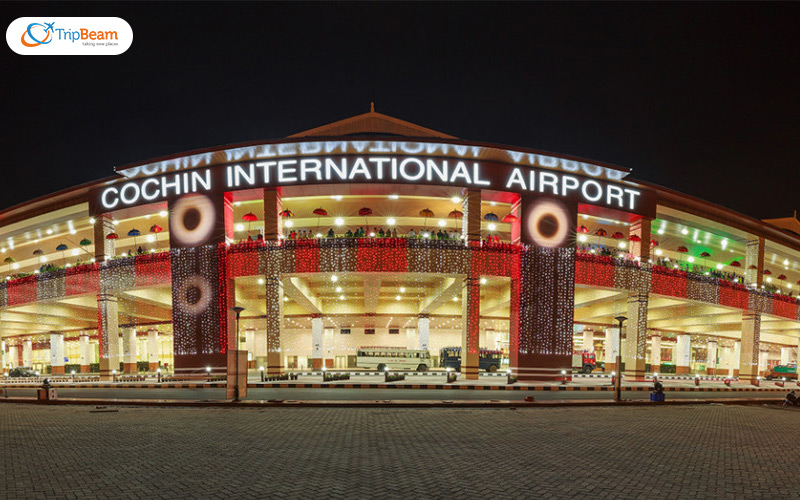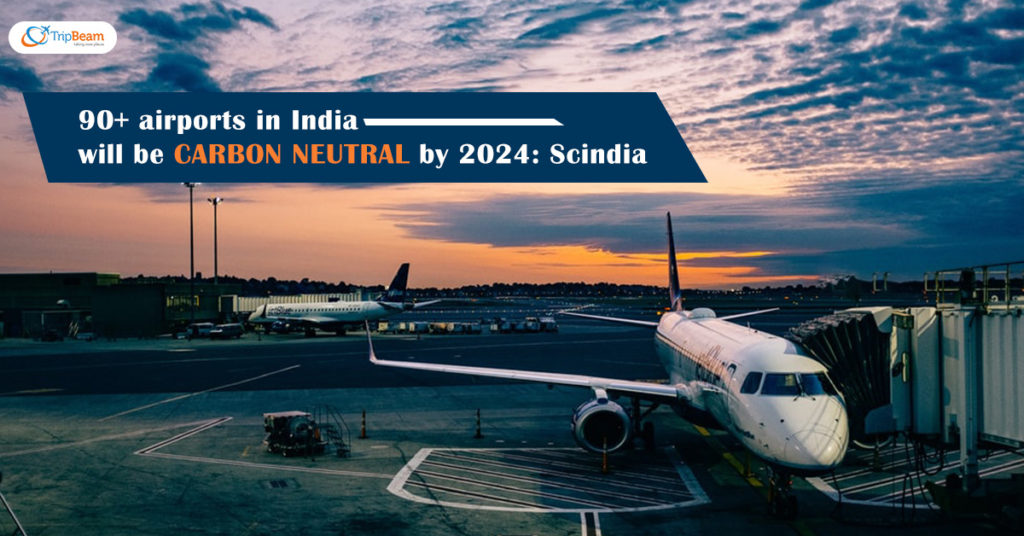India’s Civil Aviation Minister, Jyotiraditya Scindia, declared on September 20, 2022, that over 90 airports across the country are set to achieve carbon neutrality by 2024. This initiative aims to make these airports environmentally sustainable within the specified timeframe. In fact, the Aviation Ministry is gearing up to achieve a net zero carbon emissions goal in all airports of India by 2030. The Ministry of Civil Aviation’s ambitious plan to attain zero carbon emissions in all Indian airports is laudable! A net zero emission story is sure to encourage more tourists from the USA to book flights to India and arrive to witness India’s sustainable development story!
Considering that air passenger numbers are increasing day by day. The aviation industry is looking at sustainable measures like route optimization, carbon-neutral airports, SAF or Sustainable Aviation Fuel, and so on. The aviation sector in India is taking many bold steps to keep a check on the carbon footprint. Meanwhile, a move that will excite American tourists to book flights to India on Tripbeam and witness India’s success story.
Airports located at Delhi, Bangalore, and Kochi have already set the course of environment-friendliness for other airports to follow. For example, The Indira Gandhi International Airport in the national capital New Delhi is already on the path to zero emissions or carbon neutrality. A step in the right direction for a sustainable future. The airport’s power is derived from solar and hydropower energy, creating a sustainable developmental choice. In fact, the airport was the first in the country to ban single-use plastics and later became the first airport in the world to clock 1000 TaxiBot movements.


Cochin International Airport in Kochi has been carbon neutral since 2015 as it runs completely on solar power. Kempegowda International Airport (KIA) in Bangalore also achieved the coveted energy-neutral status by 2021.
The airport operator Bangalore International Airport Limited or BIAL has successfully saved 22 lakh units of energy in FY 20-21. However, it has further implemented chiller plant optimization in HVAC.
They are building Kushok Bakula Rimpochee Airport in Leh Ladakh to become the nation’s first carbon-neutral airport. It taking a step to encourage sustainability in the Ladakh region. The use of geothermal energy via a solar plant will create a sustainable reality for the ambitious Ladakhi people. “Civil aviation is a highly visible sector. It is a very high-profile sector that attracts a lot of attention. If you look at its contribution to greenhouse gases and carbon emissions, it adds just 2% of the world’s carbon emissions. He added Passengers planning to fly to India this festive season can avail of unlimited travel deals online on Tripbeam. Make a quick last-minute plan to visit India this winter.
Estimates suggest that by 2030, India will have around 400 million air passengers, double the current 200 million passengers. The government of India’s initiative to reach carbon neutrality will set a benchmark. They will ensure a sustainable and prosperous future for the generations to come.

